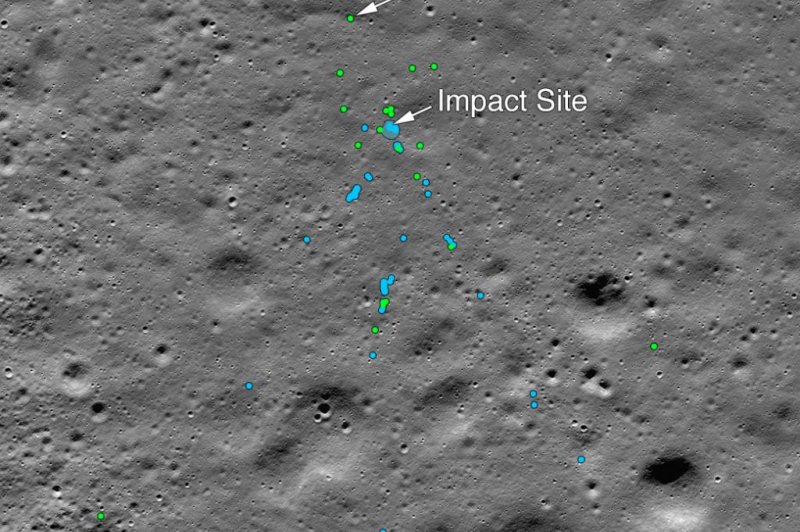Dec. 3 (UPI) -- NASA's Lunar Reconnaissance Orbiter has helped India and its space agency locate the Vikram Lander and map the impact site.
This week, the Lunar Reconnaissance Orbiter Camera team released a mosaic image showcasing the lander, its impact point and the surrounding debris field. In the image, green dots represent likely pieces of the spacecraft, while the blue dots represent bits of regolith excised by the collision.















